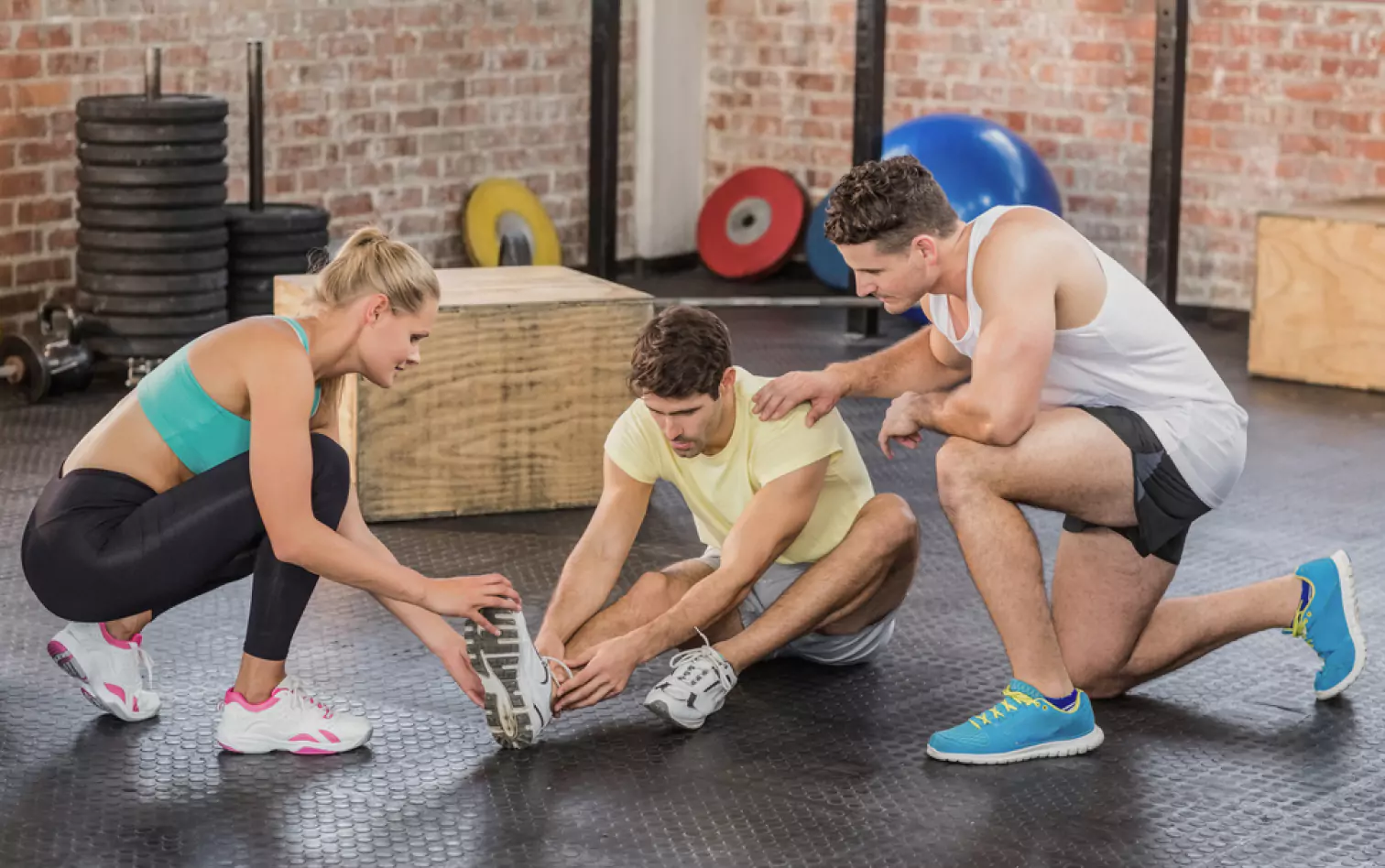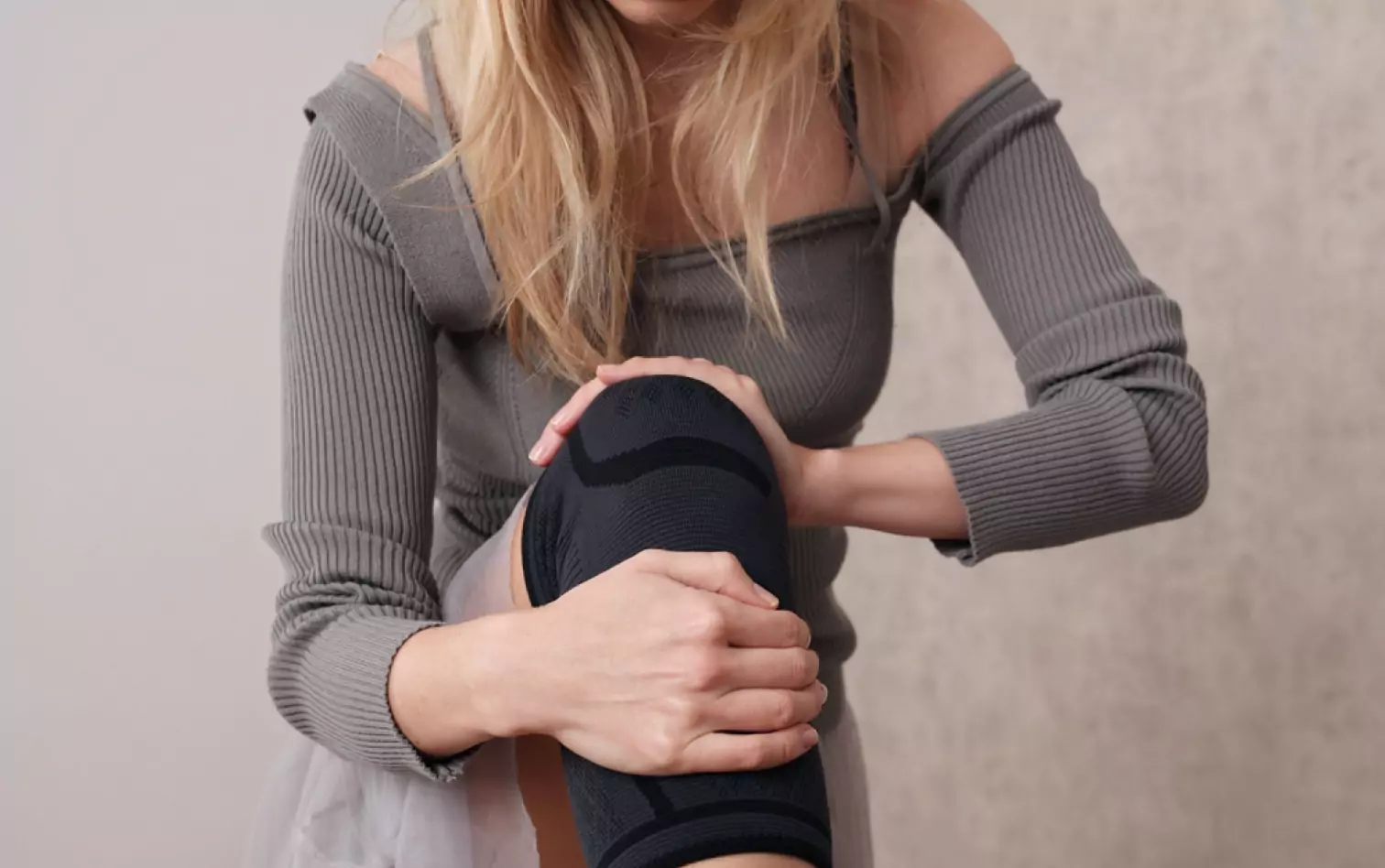Common Workout Injuries and How to Prevent Them

Key Takeways
Have you ever woken up after an intense workout with back pain, or worse?! Physical activity is part of a healthy lifestyle, but it often comes with the risk of injury. And while you’re not at risk of shin splints or stress fractures every time you put on a pair of running shoes, workout injuries are pretty common.
Athletes know their risk of injury and likely train accordingly. But even if you’re not at risk of sports injuries specifically, it’s essential to focus on proper form. After all, whether it’s muscle overuse like a shin splint from a marathon run or just a twisted ankle from a brisk walk, workout injuries can happen to anyone.
Some injuries are more common than others, but knowing what they are and your risk of injury during different workouts can help you avoid them. Read on to learn more about the most common workout injuries, how they affect blood glucose levels, and some injury prevention tips.
Exercise Injuries and Blood Glucose

Various lifestyle factors influence blood glucose levels, including the type and intensity of your physical activity. On the whole, exercise typically has a positive impact on blood glucose. It’s because muscle cells can draw sugar out of your blood to use as energy, which lowers your levels without the need for additional insulin.
The American Diabetes Association suggests using exercise as a means of blood glucose control. But if you’re constantly putting yourself at risk of injury, you’re likely not going to be able to reap the benefits.
Of course, lack of physical activity is one of the risk factors for blood sugar spikes among those without diabetes. So, if you were thinking of avoiding exercise altogether as a quick fix here, think again. Jokes aside, even being on an extended period of bed rest or having a much lower range of motion because of an injury can impact blood glucose levels.
Serious injuries can also trigger a stress response, which can also raise your blood glucose. If you’re injured (whether it’s a sprain or something more serious), consult a health care professional to see if it’s impacting your glucose levels and what to do about it.
Exercise Injuries and Weight Management

Are you exercising to lose or gain weight? Are you worried about how a recent injury can ruin your weight management efforts? While worrying about weight gain while you’re injured is not ideal, the concern isn’t unfounded.
Although there’s not enough evidence to say the injury is the main culprit, some research finds links between back injuries and weight gain. Since everything from occupational injuries to exercise injuries can lead to inactivity, it makes sense. Additionally, inactivity can be one of the causes of weight gain and obesity.
But this doesn’t mean every lower back spasm and hamstring pull will make you pile on the pounds. Since inactivity can cause other issues to develop, it’s important to focus on recovery, but don’t push it because you’re scared of potential weight gain. Instead, consider hydrating and working with a physiotherapist (physical therapists) or occupational therapist to get you physically active during your recovery and back on your feet faster after.
Another interesting thing to note is the relationship between exercise injuries and weight conditions like obesity. Obesity can lead to an increased risk for diseases like osteoarthritis, which in turn puts you at risk of knee injuries.
If you have obesity (or osteoarthritis not related to weight issues), you may be at a higher risk of injury from your workout. In situations like this, it’s best to work with a personal trainer to ensure you avoid things like improper form and overuse injury.
Overuse Injuries

Speaking of overuse injury, this is one of the most prevalent forms of exercise injury. It’s what it sounds like: an injury that arises from overusing one part of your body repetitively.
It can happen if you’ve jumped into an intense workout too soon or started working out a part of your body that’s new to your regime a little too quickly. There are two common causes of an overuse injury:
1) Training Error: Too much of a single type of activity for too long.
2) Technique Error: Poor or improper form leading to incorrectly using muscles or using the wrong muscles.
To avoid overuse injury, make sure you know enough about each exercise before trying it. Everything from equipment, form, and amount of reps involved is vital to focus on for a pain-free workout. The best way to do this is to get a personal trainer, join a gym or speak with a professional before incorporating any new exercises into your routine.
Some Common Workout Injuries and How to Avoid Each One
What kind of workout injuries can you be at risk of? And since they can affect everyone from professional athletes to exercise novices, is there any way to prevent any of them? Here’s a quick look at a few common workout injuries and how to do your best to avoid them.
CrossFit Injuries

Recent research showed that the most common exercises that cause CrossFit-related exercise injuries were squats and deadlifts. Many of these injuries occur because people tend to jump enthusiastically into lifting heavy weights—often heavier weights than they should. It takes time to build the strength and resistance required to do these exercises. The best way to avoid these injuries is to hire a personal trainer before trying any heavy lifting on your own, train regularly, and scale up with weight and repetitions slowly.
Weight Lifting Injuries
CrossFit isn’t the only exercise routine that sees its fair share of heavy lifting injuries; weight lifting is a workout in itself. This includes more casual weight training to build muscle as well as more competitive weight lifting which includes powerlifting and Olympic-style weight lifting. And for all of them, lifting just a little too much weight is a common cause of injuries. This exercise injury can include muscle strains, tendon ruptures, and shoulder injuries.
To reduce your risk of injury, follow a workout plan, and ensure you use the proper form when lifting weights. Safety equipment like a stabilization belt can also help reduce your risk of injury, particularly as you increase the amount you’re lifting. Remember, always use a spotter, even if you’re a pro.
Swimmer’s Shoulder

Swimming is an excellent form of exercise because it takes the pressure off of your joints and allows for various movements. However, it can also be a rigorous form of exercise that involves muscles you may not use every day.
One injury that can arise from this situation is a swimmer’s shoulder. To avoid the risk of shoulder injuries, ensure you swim short distances, to begin with, slowly increasing the time and length of your swim. Also, try various swimming styles to avoid overusing any specific muscles. Stretching before starting your swim can also help warm up your muscles and prevent the risk of injury.
Running and Cross-Country Skiing Injuries

These exercises are great because they incorporate various muscles and body mechanics. Cross-country skiing involves the use of both legs and arms, so this can be considered a complete workout. However, this also means you may have an increased risk of injury to several parts of your body.
Injuries to the ankles, muscles, knee ligaments, Achilles tendon, and lower back are common among cross-country skiers and runners. As with most exercises, taking it slow can help reduce your risk of injury. It’s also a good idea to ensure you engage in variety to avoid repetitive or overuse injuries. If you’re new to the sport it might be a good idea to hire a coach who can help create a training plan to avoid overuse injury. Consider warming up and incorporating some dynamic stretches before the activity to help warm up the muscles and prevent stiffness associated with injury.
Make sure you also have the appropriate footwear (yes, those running shoes are a good investment) and engage in a routine that’s right for you. If you don’t know what this is yet, ask a professional. It’s also best (for all forms of exercise) to understand your body’s warning signs before you start your workout to spot a potential injury before it happens.
Baseball Hamstring Injuries

If baseball is your physical activity of choice, you may want to watch out for hamstring injuries. Even if you’re not a professional player, this type of injury is extremely common. It’s because of the repetitive movement of throwing and running in spurts rather than a progressive exercise.
You likely already know how vital stretching is before any exercise. Make sure you don’t skip it before you play baseball so you can avoid any hamstring issues caused by stiff muscles.
Interestingly, a recent study also found that players who did fewer repetitions of hamstring-involved exercise during their baseball games and practice had more injuries. Consider engaging in a good warm-up and cool-down before and after the game to avoid overuse injuries.
Cycling and Spinning Injuries

While cycling or spinning are non-weight-bearing exercises (meaning they’re easier on your joints), they come with their own risk of injury. Indoor cycling, in particular, can cause everything from neck pain and saddle sores to lower back pain and, in some very rare cases, a syndrome called rhabdo.
Exercise injuries from this workout can occur because they include restricted movements. You’re essentially locked in place on the machine, which can put pressure on specific muscles, primarily along your sagittal plane. Make sure you stretch beforehand, scale up your exercise slowly, and find creative ways to change positions. All of this can help you avoid overuse injuries when you’re spinning or cycling indoors.
Volleyball Injuries

Overuse often affects your shoulder and back the most, especially when you’re playing a game like volleyball. The primary impact of movement during this sport is concentrated on those areas of your body. So if you play the occasional game without proper stretching, warm-ups, and cool-downs, you may end up with a shoulder injury.
Even if you play professionally, many players find working with a physical therapist on a preventative rehabilitation routine helpful. Consider stretching before working out and using additional strength-power exercises to keep your muscles limber and ready for use to avoid overuse injuries here.
Dance Injuries

Yes, dance is an exercise—and it can be intense enough to injure you. From ballet to ballroom, every dance style is unique, but one thing they all share is the risk of overuse injuries.
For example, when it comes to ballet, you can suffer from stress fractures, ankle problems, shin pain, tendonitis, knee injuries, and hip and back injuries. Here too, stretching and strengthening exercises can reduce your risk of overuse injuries.
Many dancers use exercises like pilates to strengthen their muscles, which can also help prevent overuse. If you dance regularly, try to diversify your muscle use by switching up your routine as much as possible and asking a professional to tailor a routine for you.
Find the right Nutrisense programto turn insight into progress.
Go Beyond Glucose Data with Nutrisense
Your glucose can significantly impact how your body feels and functions. That’s why stable levels are an important factor in supporting overall wellbeing. But viewing glucose isn't enough. Nutrisense, you’ll be able to learn how to use your body's data to make informed lifestyle choices that support healthy living.
One-to-one coaching
Sign up to access insurance-covered video calls to work with a glucose expert: a personal registered dietitian or certified nutritionist who will help tailor your lifestyle and diet to your goals.
Monitor and measure what matters
With the Nutrisense CGM Program, you can monitor your glucose with health tech like glucose biosensors and continuous glucose monitor (CGM)s, and analyze the trends over time with the Nutrisense App. This will help you make the most informed choices about the foods you consume and their impact on your health.
Find your best fit
Ready to take the first step? Start with our quiz to find the right Nutrisense program to help you take control.

Katie is a dietitian at Nutrisense. With over 11 years of experience as a dietitian in many areas of nutrition, Katie has worked as a clinical dietitian within a hospital, as well as in the fields of diabetes, sports and performance nutrition, recovery from addiction, and general wellness. She’s also an athlete and has run 8 marathons, including the Boston Marathon.

.webp)


